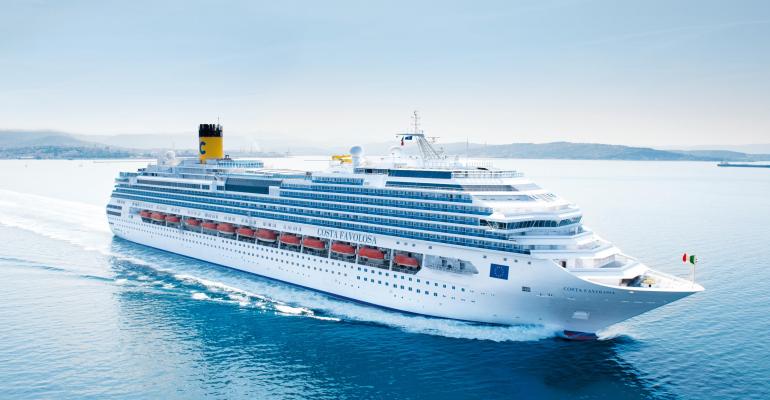Further results include a 9% reduction in sulfur oxides and a 4% reduction in nitrogen oxides and particulate matter compared to the previous year.
In addition, 100% of waste is sorted on board. Some 393 tons of aluminum have been collected and sent for recycling over the last 10 years. And 62% of the water required is produced on board.
'The roadmap we created three years ago places sustainability at the center of an integrated and multi-stakeholder approach,' said Stefania Lallai, sustainability and external relations director, Costa Cruises. This led, she added, to a series of successful projects involving the major participants.
Costa integrated the sustainable development goals defined by the UN's 2030 Agenda into its company objectives.
'The next step on the way to an increasingly sustainable future will be to make our guests play a progressively more active part as well, essential in order to achieve results and experiences that go beyond a cruise holiday,' Lallai said.
The most significant projects in terms of emissions and consumption involve the installation of ECO Exhaust Gas Cleaning systems, which reduce certain emissions by more than 90%, ship maintenance, the streamlining of navigation systems and systems for on-board services, and the use of digital instruments for monitoring the environmental performance of each ship.
Future initiatives include newbuilds powered by LNG, scheduled to arrive in 2019 and 2021.
Costa also has been striving to reduce waste production and promote recycling and the recovery of materials. The consolidation of its collaboration with CiAL (the Aluminium Packaging Consortium) enabled the recycling of the 393 tons of aluminium so far. Also significant is the 'Message in a Can' project, which increased the collection of aluminum in the Municipality of Savona by 27%.
Costa's partnership with the Centro Nazionale di Ricerche (National Research Center) continued in 2016, with a focus on significant issues in oceanographic and marine sciences sectors. The line made its ships and on-board professionals available to support scientific research activities and raised the awareness of issues among the passengers and crew.
Further projects in Costa’s sustainability strategy involved ensuring economic development and growth opportunities in the places visited by its ships, while enhancing their identity, culture and natural heritage. One example is a new Indian Ocean itinerary including India, the Maldives and Sri Lanka, which created tourism jobs.
Further destinations and cultural sites were added to the company's excursion programs, in particular, focusing on Italy's 'hidden' artistic and cultural treasures.
And in Savona, Costa's main homeport, a study carried out with PwC quantified the company's economic contribution to the city's GDP as €38m annually, with 681 jobs created and a direct expenditure of €96 per passenger disembarking from Costa ships.
Commitment to the development of skills within the company was strengthened with more than 800,000 hours of training for employees during the year. The new Accademia Ospitalità Italiana Crociere (Academy for Italian Cruise Hospitality) was inaugurated in collaboration with the Liguria Region, the Municipality of Arenzano and the ITS Accademia Italiana Marina Mercantile (the Italian Merchant Marine Academy).
A focus on sustainable food supply chains is another project. Over the past two years, more than 500 dishes that express Italian tradition and the Mediterranean diet were added to fleetwide menus, with an emphasis on fresh and seasonal products.
An English version of the full report can be downloaded here.
Copyright © 2024. All rights reserved. Seatrade, a trading name of Informa Markets (UK) Limited. Add Seatrade Cruise News to your Google News feed.


